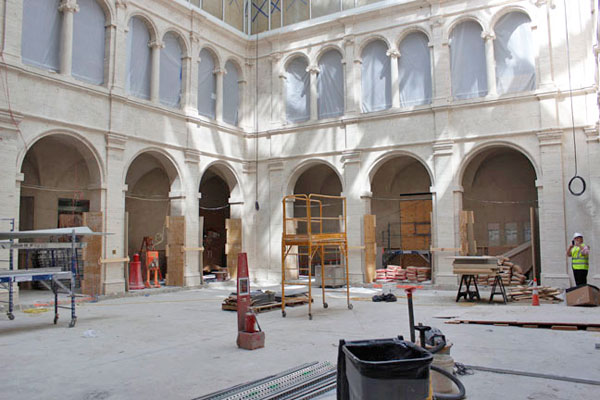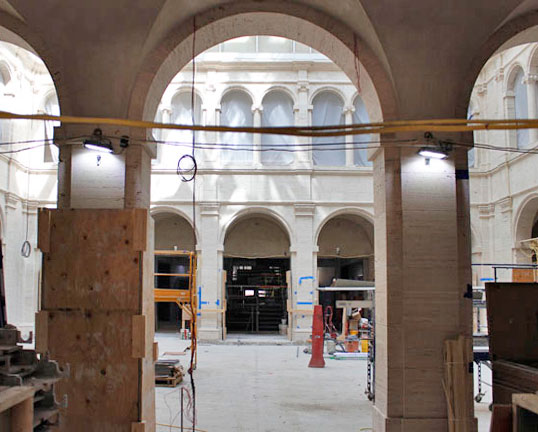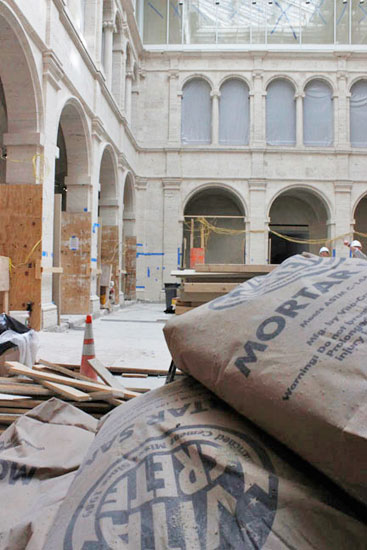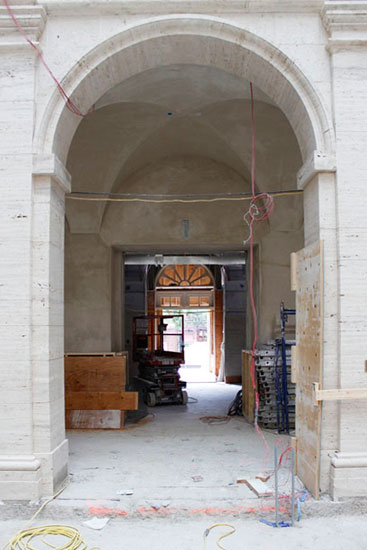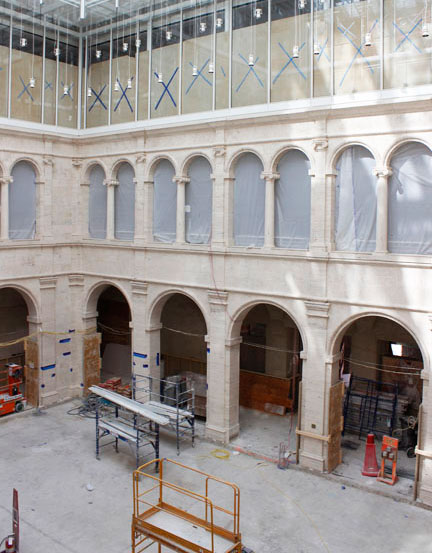It’s no wonder that the Harvard Art Museums Calderwood Courtyard feels so inviting. This iconic space, part of our 1927 building, was designed to serve as an entryway, not as an enclosure. The model for our courtyard is the façade of the canon’s house of the 16th-century church of San Biagio, in Montepulciano, Italy. Architects Coolidge, Shepley, Bulfinch & Abbott reproduced this façade four times and turned it inward—an effect that suggests a variety of entrances through which the museums can be explored.
Ever since the opening of our historic building, the Calderwood Courtyard has served as the center of Harvard Art Museums’ activity—it’s where visitors orient themselves, celebrations take place, and journeys into our collections and programs begin. Our renovation and expansion project has allowed us to make a number of enhancements to this core space, and now that the Calderwood Courtyard is free of scaffolding and full of light, we have been able to experience those improvements firsthand.
On a recent visit, we were struck by how much fresher this signature space looks. While the addition of our new glass roof certainly plays a big role in brightening this space, so does the work that’s gone into the cleaning and rehabilitating of the courtyard’s travertine stone. To restore the courtyard’s visual and physical integrity, workers employed a safe and gentle cleaning method called “sponge jetting” to remove dirt from the travertine. Also, masons “repointed” the stone’s thin mortar joints, which involved replacing some deteriorating mortar with new mortar.
When the new Harvard Art Museums reopen, our Calderwood Courtyard will not only be brighter, cleaner, and stronger than ever before—it will also be even more inviting, as this space will be free and open to the public.
Listen to Harvard Art Museums Director Thomas W. Lentz discuss Renzo Piano's transformation of the Calderwood Courtyard in this video,
